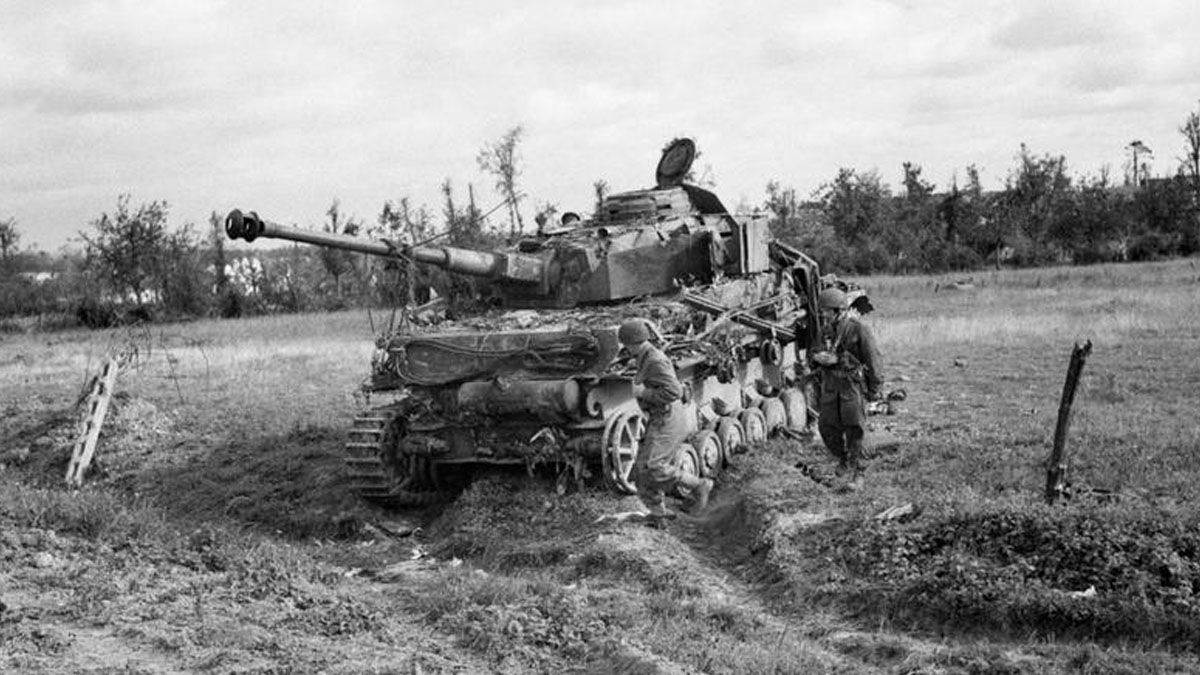General Richter’s bunker lies under the Mémorial de Caen Museum on the northern side of Caen. The museum opened on 6th June 1988, forty-four years after Generalmajor Wilhelm Richter’s men left the bunker. He was commander of the 716th German Infantry and this underground cavern was his command post.

Artefacts restored to their 1944 condition including communications devices like those once used in Richter’s bunker are on display. Photo taken on 7th June 2014.
At 70m long and 3m tall, the bunker was a sizeable structure dug through solid limestone. Until 1943, it was a quarry and had also been used as a firing range by the French Army.
Under the command of General Richter, the bunker contained a full transmission centre. It was ventilated and had a generator for electricity and a cistern for water. Secretaries, telephonists, cartographers and officers worked there underground.
Telephone cables ran underground connecting Richter to other occupied Nazi outposts. From here in Caen, he oversaw coastal battles from Omaha Beach to the River Orne. Richter was also connected to the Carpiquet aerodrome.

Authentic 1944 Battle of Normandy signage depicts a minefield like the one that surrounded the plateau around Richter’s bunker. Photo taken on 7th June 2014.
A small garrison of German troops defended the bunker. Machine gun posts overlooked each of the three entrances. Armoured doors completed the bunker’s defence system. A buried tank and minefields on the plateau overlooking the quarry covered the immediate surroundings.
D-Day from Richter’s Bunker
General Richter’s command centre was one of the first to relay the news of the D-Day landings. At the height of the Battle of Normandy, it saw use as both a shelter and makeshift field-hospital.

Some of the weapons and ammunition from Axis troops in 1944 that now make up the D-Day display in Richter’s bunker deep beneath the Mémorial de Caen. Photo taken on 7th June 2014.
On the night of 5th June 1944, the 716th Infantry Division heard of unusual aerial activity in the area. Parachute dropped to the east of the Orne and west of the Dives. In the early hours of the 6th June, the Nazi headquarters received a stream of information from along the coast.

Imperial War Museum Photo: B 6745 (Part of the War Office Second World War Official Collection). A German Panzerkampfwagen IV tank lies out of action in the Battle of Normandy near Caen on 9th July 1944.
The staff in Richter’s bunker, collected and analysed information before passing it along to the higher echelons. Richter reported to General Marcks of the 84th Army Corps. Their base was at Saint-Lô.
On the night of 7th June 1944, officers met to devise a counter strategy. They aimed to drive Allied troops back to the sea but the front lines remained in place for weeks.
In the bunker today
German troops vacated the post on 23rd June 1944 amid intense fighting. Information from the French Resistance informed the Allies of the bunker’s existence. Canadian infantry troops seized possession soon after on 9th July 1944.
The bunker lay abandoned for several decades afterwards. The fire brigade in Caen used it for firefighting exercises in confined spaces.
In 1991, the space became an area of the Mémorial de Caen dedicated to the Nobel Peace Prize. It entertained illustrious guests such as Elie Wiesel, Lech Walesa, the Dalai Lama and Vaclav Havel.
In the run up to the 70th anniversary of the D-Day landings, Richter’s bunker was once again transformed to its almost original state.